When was saying "Merry Christmas" on censorship? How to make Jewish carp without carp and pike pie? Why was Saint Nicholas accused of poisoning? Make sure you know everything about Christmas!
As always, all positions in the TOP10 ranking are based on the articles we publish. This time we decided to show the Christmas side of history. You can find more about the everyday (and festive) life of ordinary people HERE.
It's worth remembering during Christmas…
10. What a remarkable significance of Christmas in the Middle Ages
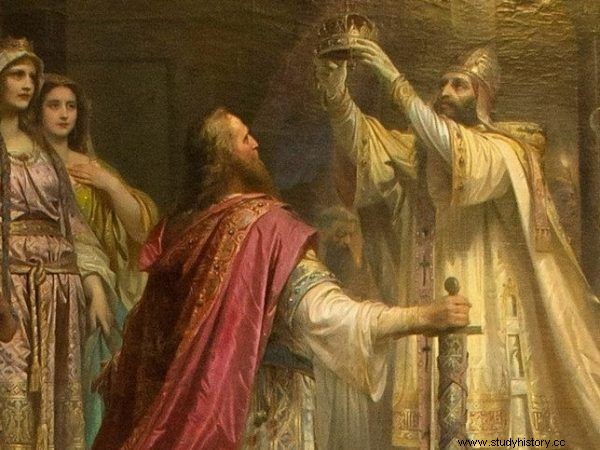
It was at Christmas that Charlemagne was crowned emperor. Detail of a painting by Friedrich Kaulbach.
Before a millennium, Christmas was eminently secular. The anniversary of Jesus' birth was associated with celebrations related to the beginnings of earthly power. This custom was initiated by Charlemagne, who was elevated to the rank of emperor on December 25, 800. Numerous monarchs followed in his footsteps. For example, all the Otton rulers of the Reich were crowned during the holidays. In England, the tradition was picked up by William the Conqueror. It is very possible that the crown also appeared on the temples of Bolesław the Brave on December 25, 1024 (read more about this).
9. What was eaten during the occupation Christmas Eve
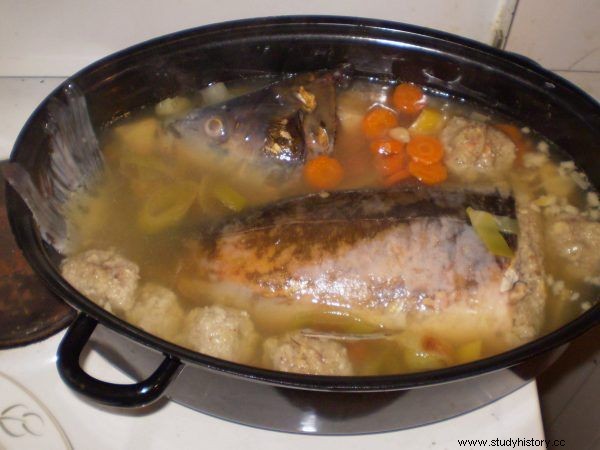
The Jewish war fish had little to do with its modern version ...
During the war, large fish, such as carp, were either too expensive or difficult to come by for most people. Instead, to prepare the Jewish-style fish, small fish were used, such as smelt, which were ground with onions, bread rolls and potatoes. And although you could be sent to the camp for the mere accusation of having ties with Jews during the war, Jewish carp (though without carp!) Was still called (read more about this).
8. What was wished for Christmas under the occupation

Distribution of parcels on Christmas Eve 1941.
Is it appropriate to say "Merry Christmas" during the war? The abandonment of such traditional wishes was the best testimony to the mood under the occupation. It would be "in too screaming contrast to reality." The friends were only allowed to say, "Have a nice Christmas." In the face of constant fear of round-ups, and even of being hit by the Gestapo, these were extremely sincere wishes (read more on this topic).
7. That Poles were one of the first to believe in Saint Nicholas
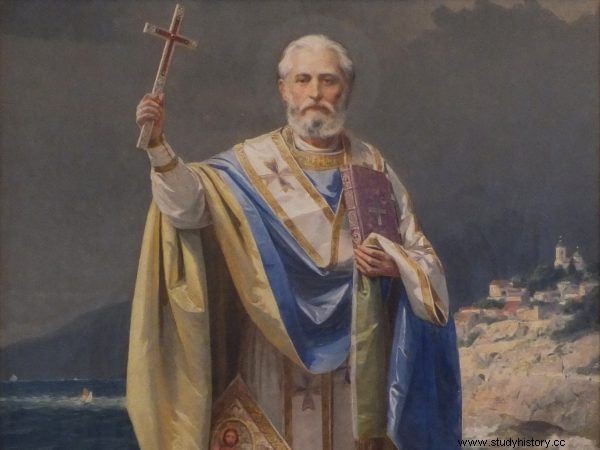
Saint Nicholas, a special patron of ... Poland and our first dynasty. Fragment of a painting by Urosz Predic from 1903.
A thousand years ago, almost no one believed in Santa Claus. The situation changed the interest in him at the court in Constantinople. In 972, the Greek woman Theophano, engaged to Emperor Otto II, took to the Reich, among others, an icon representing Bishop Mira. One of the first children of believers in this saint was the Empress's daughter, Matilda. Poles know she as the mother of Rycheza, daughter-in-law of Bolesław the Brave. Thanks to her, the cult of Nicholas settled in Poland at the beginning of the 11th century. For the next century, Mikołaj was considered one of the most important patrons of the Piast dynasty (read more about this).
6. Who is Santa's neighbor
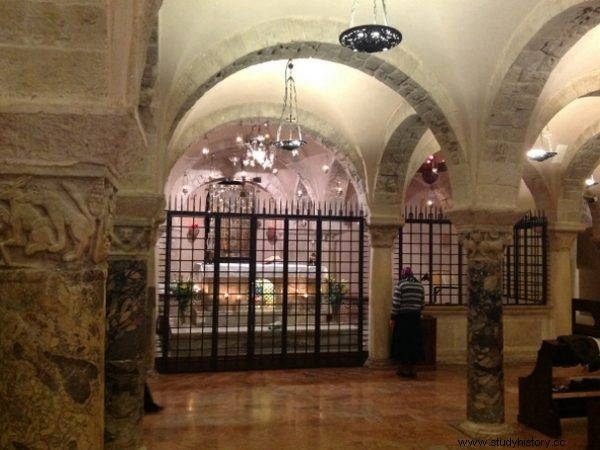
Crypt in the basement of the basilica. It is here that the remains of Saint Nicholas are buried ... and a few meters away a woman who was a significant figure in the history of Poland.
In 1087, Barry sailors kidnapped half of the remains of Bishop Nicholas from the mausoleum in Mir. After they were transported to the Italian city of Bari, the construction of the Basilica of Saint Nicholas began immediately. Already in 1089, Pope Urban II solemnly placed the bishop's remains in the crypt. Interestingly, the same basilica in Bari a few centuries later became ... the representative church of Polish kings! It is here that the body of Queen Bona Sforza rests. The Polish monarch is only a few meters away from Saint Nicholas (read more about it).
5. Where did the Christmas tree lights come from
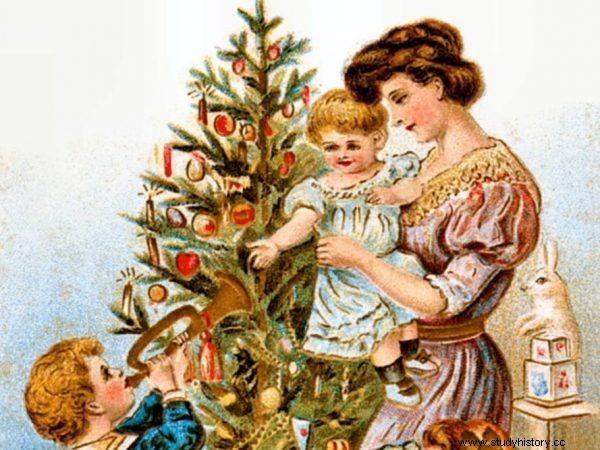
Precursors of Christmas lights - candles on the Christmas tree - on a postcard from the Victorian era.
The first Christmas tree lights appeared in the USA. It was invented in 1882 by Edward Johnson. In his apartment on Fifth Avenue in New York, he installed 80 lights in the colors of the American flag on the Christmas tree. However, they only became popular 13 years later, after President Grover Cleveland hung them on his Christmas tree in the White House. Celebrities - and then ordinary people - wanted to emulate this trendsetter. It wasn't easy. In 1900, a set of lamps cost $ 300 - as much as half a nice car (read more on that).
4. What was it like on Christmas Eve at the gentry's court

The men who fish under the ice more or less consciously refer to the tradition of ... the gentry Christmas Eve!
In nineteenth-century mansions, fish traditionally served for Christmas were prepared at the last minute, so that they would stay fresh. The morning catch on Christmas Eve was a part of the Christmas tradition. The beginning of December 24 could not be complete without hunting, which supposedly provided health and abundance for the whole coming year. However, hunters were not exempted from the traditional Christmas Eve fast. The hunted game was transported to the court kitchen for use in the following days (read more about this).
3. How Christmas Eve was celebrated in the Saxon times
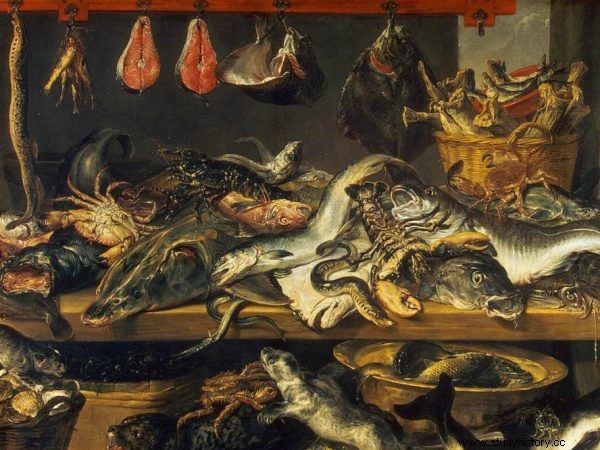
Fish could not be missing on the magnate's festive table. Fragment of Frans Snyders' painting "The Fish Market" from the 1720s.
According to the 18th-century custom of Christmas Eve dishes, it did not have to be twelve. There was even a superstition that their number should be… odd. The most popular Christmas Eve dish was almond soup, followed by borscht. Instead of dumplings, it could be served with an "egg", formed from a white soup, cooked on ... pike. The pike was also eagerly cooked in its husk, seasoned with beer vinegar and caraway seeds. Even ... cakes were made on the pike roe (read more about this).
2. What unusual gifts could be received in pre-war Poland
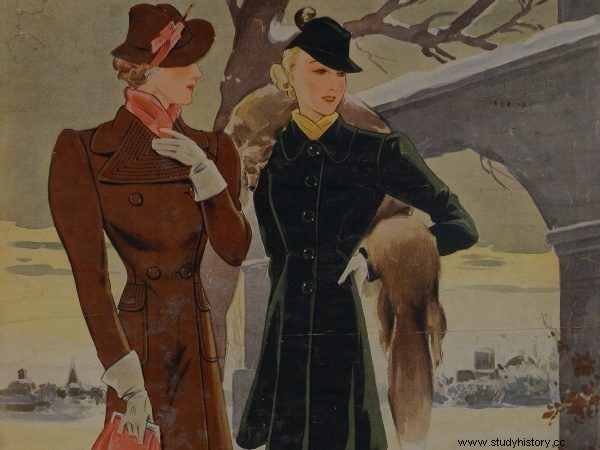
Thanks to the right gift, each lady could feel like the girl from the cover of "Przegląd Mody" (no. 12/1936).
Krakow's Światowid, in the issue of December 17, 1927, devoted a whole page to Christmas gifts for ladies. The author of the text noted:“Every lady, even if she already had a fur coat, would be happy to see another fur coat or a fur cape. And such a fashionable fur cape, a beautiful black fox, or blue or white, aren't those beautiful and practical gifts at the same time? " However, in 1930, among the ideas for gifts there were travel accessories:a brush case, cigarette case, cigar and lighter, "everything made of crocodile leather" (read more about this).
1. That the name of Saint Nicholas was mixed up in one of the biggest poisoning scandals in history
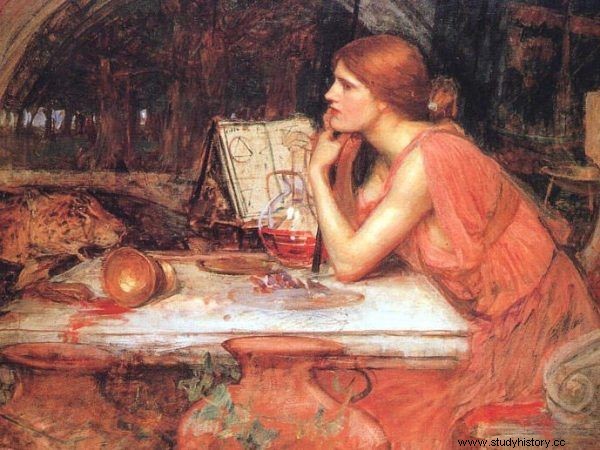
The famous poisoner tarnished Saint Nicholas' good name. A painting by John William Waterhouse from around 1911 of Circe, often mistakenly thought of as a portrait of Giulia Tofana.
Giulia Tofana, a 17th-century Italian woman and champion of poisoning, once announced that Saint Nicholas had appeared to her and gave her a recipe for a substance with miraculous healing properties. In fact, it was most likely the liquid that poured out of the pig meat when arsenic was rubbed into it. Only 4 drops of this substance were enough to kill a man . Very quickly the "manna of Santa Claus of Bari" found its amateurs. The number of its victims is estimated at around 600 people. And the accusations were made primarily against ... Saint Nicholas (read more about this).
